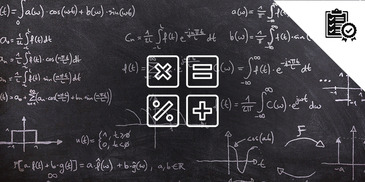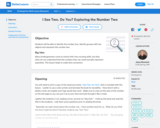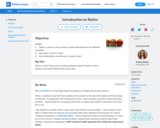
Who's the REAL meat eater here? Let's do some math and find out!
- Subject:
- Mathematics
- Material Type:
- Lesson Plan
- Provider:
- BetterLesson
- Date Added:
- 12/01/2022


Who's the REAL meat eater here? Let's do some math and find out!

Students will extend their understanding of hundreds, tens and ones using dollars, dimes and pennies as another way to express groups of 100, 10 and 1.

Students will be able to identify the number five, identify groups with five objects and represent the number five.

Kindergarteners love to identify shapes in their environment. In order effectively do that, they must be able to recognize different shapes by their specific attributes. In this lesson kindergartners learn about the attributes of a square.

Kindergarteners love to identify shapes in their environment. In order effectively do that, they must be able to recognize different shapes by their specific attributes. In this lesson kindergartners learn about the attributes of a cone.

Students will be able to identify the number two, identify groups with two objects and represent the number two.

In this activity, students will identify shapes found around the room by recognizing their attributes such as number of angles, vertexes, and faces.

Find a lesson here to help students learn more about money that is all around them! Give them the chance to review coin identification with the coin game and practice.

First graders begin to learn about plane shapes in Kindergarten. This lesson will serve as review of plane shapes' characteristics and extend into practice in categorizing shapes by defining attributes.

Students will be given set amount of money to add, and identify how many tens and ones.

Dig into identity and inverse properties.

Made to measure! In this lesson students will be able to use the transitive principle for indirect measurement as they compare the lengths of the objects to each other.

If a < b, what do we know about a and b? If b < c < d, how could we show that on a number line? Students continue creating inequalities and graphs to represent situations.

Numbers don't stop at 20! We spend the last week or so of school looking at the numbers beyond 20. Today we do it through exploring a 100 Chart.

A big word for a big idea! After being introduced to the term quadrilateral, the students will learn the characteristics of them and have an opportunity to create various quadrilaterals.

To understand the concept of ratio and use ratio language to describe a ratio relationship between two quantities.

SWBAT place numerals in order from least to greatest on a number line.

The number line is a tool 6th grade students will need throughout the year and this activity will allow students to explore and become familiar with it.

It's getting buggy! Students use unifix cubes as their non-standard measurement tool.

What is a ratio? How can we create equivalent ratios? Students work to express and extend relationships using ratios.